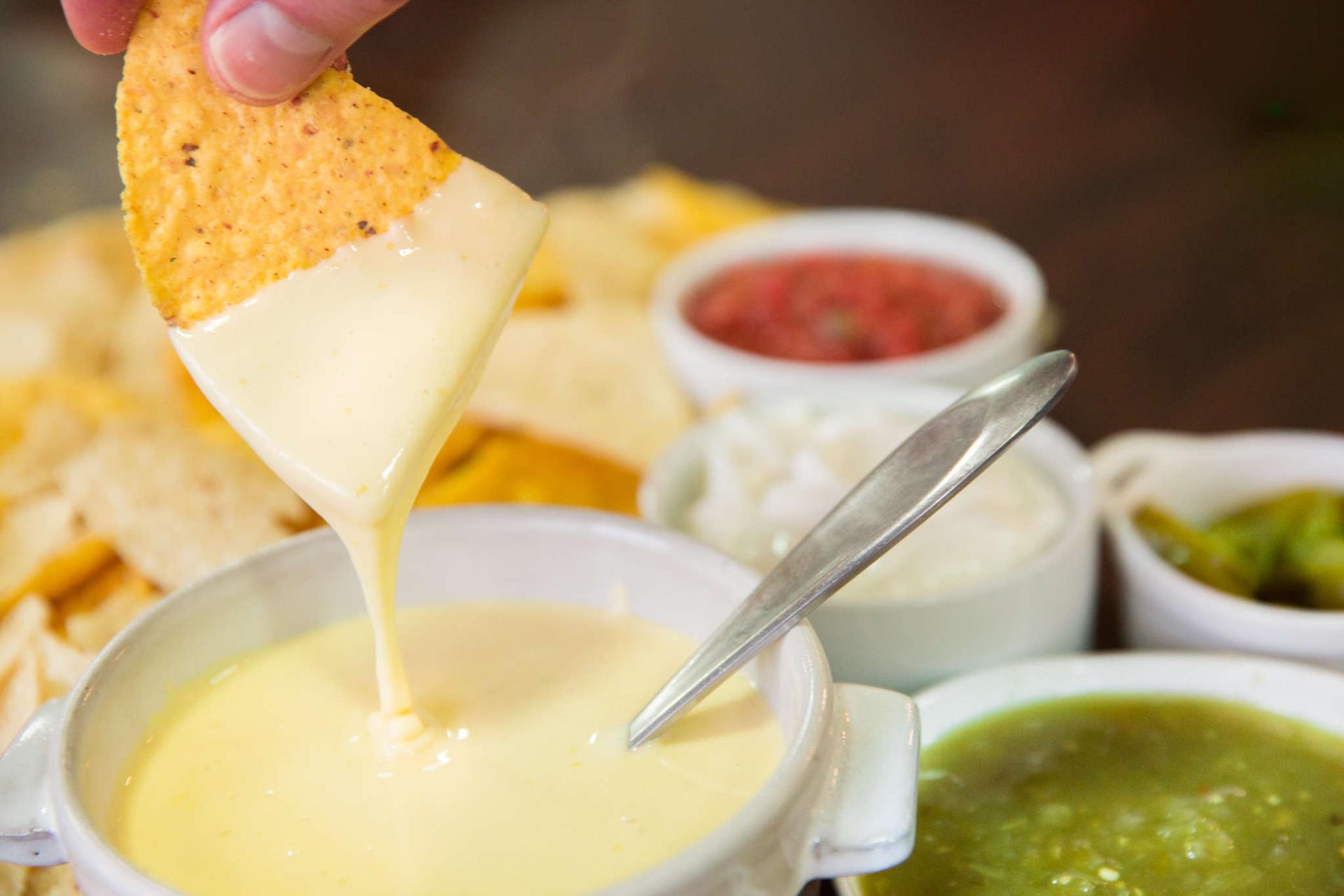What exactly is processed cheese, anyway?
A little cheese sauce.
The words “processed cheese” probably conjure visions of cellophane-wrapped slices from lunchbox days. But maybe expand your mind, just a bit.
According to Lloyd Metzger, a dairy scientist at South Dakota State University, however, it’s hard to define what exactly processed cheese is.
“You'll see terms like pasteurized, processed cheese, pasteurized processed cheese food, pasteurized processed cheese spread, and pasteurized processed cheese product,” Metzger says. “All of those products will be in the same category in the store. They'll look very much alike, but the ingredients and how those cheeses were made will vary dramatically. So it's a really hard question to answer.”
To understand processed cheese, Metzger offers a history lesson. Processed cheese, he says, was originally dreamed up by inventor James L. Kraft as a way to keep blocks of cheese fresh on his Chicago cheese wagon. And it’s not a uniquely American invention — Europeans, too, were experimenting with cheese processing at the same time.
“If you take a cheese and put it in your refrigerator it's alive and it keeps changing over time,” Metzger says “The characteristics of that cheese rapidly change over time and it can be a good change if it's a very nice aged cheddar or it can spoil in your refrigerator. So processed cheese was designed to try to arrest and stop that ripening process.”
One thing is true of all processed cheeses, however: “When you make a processed cheese you actually start with a natural cheese,” Metzger says. “You have to add some type of ingredient called an emulsifying salt and that can be something as simple as a wine or a lemon juice and some baking soda. … Basically what you need is a key that will bind the calcium and cause this cheese to actually form a nice smooth, velvety creamy texture.”
To illustrate, Metzger points to a bowl of spaghetti, with all the noodle strands in a big pile, interacting with each other. When an emulsifying salt is added, it makes all those strands unravel and become individual strands that begin interacting with any fat and water present in the cheese.
“And then the cheese will no longer leak oil,” Metzger says, “And [it] won’t have water that comes out of it. And with a little mixing and heating you make this very nice, smooth, creamy product and that's basically what you're doing when you're making processed cheese.”
Processed cheese is what we have to thank for ball game nacho cheese and boxed macaroni and cheese.
“The cheese used in macaroni and cheese really needs to be a processed cheese to not have that grainy texture,” Metzger says, “If you use just a straight cheddar you'll get a very gloppy oily product that really doesn't have that desirable velvet melty characteristic that you're after in your macaroni and cheese.”
For those averse to using a highly processed cheese found in boxed pasta blends, Metzler says it’s simple to make a processed cheese at home.
“Just go buy some mild cheddar cheese,” Metzger says, “And put that on a saucepan on your stove top. Add some water to it and then also add some lemon juice and a little bit of baking soda. And just stir it up with a whisk and you'll get this very smooth, creamy product. If you want it to be thinner, add a little bit more water to it and you can really get your nice nacho cheese sauce at home.”
Want a recipe for cheese sauce? Metzger has you covered:
The following recipe is republished with permission from ChefSteps, a Seattle-based food and technology company on a mission to help people cook smarter.
This super-easy recipe takes about 25 minutes from start to finish, and the resulting cheese sauce is every bit as delicious as the cheesy topping you pump from a dispenser at the stadium. We use orange cheddar and kick it up a notch with spicy pickled jalapeños. The key to the velvety-smooth emulsified texture, though, is melting salts. In fact, you can’t get ooey-gooey melty cheese sauce without ’em, and the good news is: They’re affordable, easy to find, and easy to use.
Ingredients
- 300 g Tillamook extra sharp cheddar
- 300 g milk
- 4 g salt
- 12 g sodium citrate
- 1.5 g sodium hexametaphosphate, (SHMP)
- 50 g pickled jalapeños
Equipment
- Blender
Timing
25 minutes
Yield
600 g, or about 12 servings
Step 1 — Cut cheese into small pieces
- 300 g Tillamook extra sharp cheddar
Cut into small pieces, or shred with a cheese grater.
Step 2 — Place ingredients into a ziplock bag
- 300 g milk
- 4 g salt
- 12 g sodium citrate
- 1.5 g sodium hexametaphosphate
Place milk and salts in a Ziplock bag and agitate slightly to dissolve. Add cheese, and seal bag. Drape the bag over the side of the sous vide bath, taking care not to leak any water in the bag.
If you don’t have a sous vide circulator, try our improved sous vide method, using just a pot of water on your stove top.
Step 3 – Melt cheese
Place bag in 167 °F / 75 °C bath for 15 minutes to melt the cheese.
Step 4 — Blend
- 50 g pickled jalapeños
Place melted cheese and pickled jalapeño in blender and blend until smooth. If you want larger chunks of jalapeños, chop them by hand and fold them in after you blend.
Step 5 — Serve warm
Pour nacho cheese into an insulated container (like a cocotte or other pot with a lid), and serve warm.
This article is based on an interview that aired on PRI's Science Friday as well as an article published on their site.
